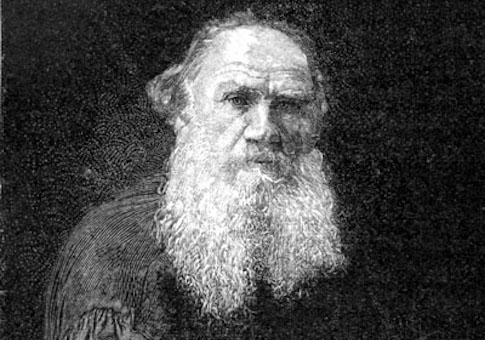Do young people write novels anymore? I don’t mean Kindle erotica or derivative fantasy fiction meant for the post-Harry Potter "Y.A." market. I mean the sort of things I used to bang around with in my rapidly disappearing youth: semi-autobiographical bildungsromans cleverly (or so their authors imagine) concealed by the third-person à la Joyce; passionately lyrical evocations of small-town and/or big-city life; book-length pastiches of Faulkner or Nabokov or Pynchon or (insert the name of your favorite flashy prose stylist), all done in Courier or some similar type-writer-looking font, or even better, on an actual typewriter—sorry, fountain pens are for dorks, not would-be Flauberts. Ah, herte mine!
I wonder what America’s few remaining adolescent highbrow novelists will make of How to Write Like Tolstoy, Richard Cohen’s funny and encouraging new book about fiction. Cohen, a veteran of British publishing who has edited John le Carré and Kingsley Amis among others, certainly knows what good fiction looks like. Can he, or anyone else, teach us how to write it? This is the question that everyone in the how-to-write business must answer sooner or later; Cohen is gamely ambivalent, telling us in his preface that "although I don’t expect readers of this book to end up modern Tolstoys—who knows?"
Cohen’s title is a joke, of course. That’s unfortunate, because for those of us who can’t read Russian, writing like the author of War and Peace—affectionately referred to in these pages as "Lev"—would mean writing in the unfussy, dignified Edwardian English of Constance Garnett. Not a bad thing to aspire to. Nor is this really a how-to book in the narrow sense of Writing a Novel and Getting Published for Dummies or even The Elements of Style. What it most resembles is one of those old-fashioned treatises, like Forster’s Aspects of the Novel or Ford’s March of Literature. What separates it from these books is its refreshingly casual tone.
As a survey of fiction writing Cohen’s work is comprehensive. There are chapters on plot and character and dialogue, on prose rhythm and the uses of irony, and two chapters on revision. But the best chapters are those that do not, strictly speaking, belong with the others, the ones on sex in fiction and plagiarism. "Writing well about sex is a fine ambition," Cohen tells us with hilarious understatement, "but difficult to carry off successfully." To would-be literary pornographers, he recommends Donne and the Song of Songs. He is even better on plagiarism, his treatment of which is wonderfully even handed. He rightly notes that what we would now call plagiarism has been "at the heart of cultural life for centuries, bringing much good and much pleasure."
Many readers, teenaged and otherwise, will groan at some of the material here—Strunk and White, what iambic pentameter and onomatopoeia are, "Write drunk, edit sober," flat vs. round characters. There are also some odd editorial lapses and inconsistencies: Why are parenthetical dates appended only sometimes to titles of books and stories and names of authors, often on their second or third or fifth appearance? Questionable judgements abound. Is James Wood "the best literary critic now writing regularly"? When Cohen takes Michael Holroyd, one of our most distinguished living biographers, to task for a handful of bad sentences in one of his most recent books, it is hard to see it as anything but score settling. It also leaves Cohen open to the classic pitfall of those who write about writing, namely, conspicuous shoddiness: e.g., "If one writer favored dialogue in her novels, it was the British author Ivy Compton-Burnett (1884-1969)."
The best thing about Cohen’s book is how refreshingly enthusiastic, even romantic it manages to be about the business of writing. It will leave would-be novelists brimful of, if not hope, at least good advice, and it gives you a delicious sense of what the possibilities are. It even made me think about buying a typewriter.
